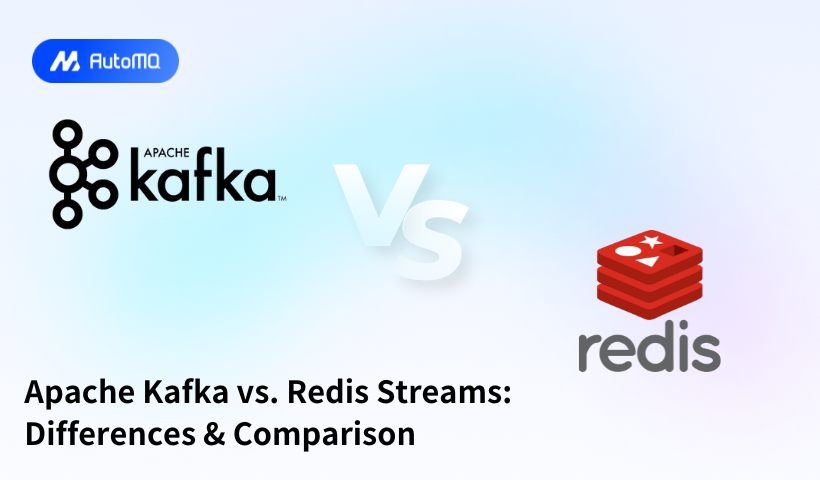Overview
Redis Streams and Apache Kafka are two popular technologies for handling real-time data streaming and messaging. While they share some functional similarities, they differ significantly in architecture, performance characteristics, and ideal use cases. This comprehensive comparison examines their differences, implementation details, performance considerations, and best practices to help you make an informed decision for your streaming data needs.
Core Concepts and Architecture
Apache Kafka
Apache Kafka is a distributed streaming platform designed specifically for high-throughput, low-latency data streaming[5]. Developed initially by LinkedIn and later donated to the Apache Software Foundation, Kafka has become the industry standard for building real-time data pipelines and streaming applications[14].
Kafka's architecture consists of several key components:
Brokers : Servers that store data and serve client requests
Topics : Categories for organizing message streams
Partitions : Subdivisions of topics that enable parallel processing
Producers : Applications that publish messages to topics
Consumers : Applications that subscribe to topics to process data
Consumer Groups : Collections of consumers that work together to process messages[4]
Kafka stores messages on disk by default, providing durability and persistence while still maintaining high throughput[9].
Redis Streams
Redis Streams is a data structure introduced in Redis 5.0 that acts as a log-like append-only data structure[11]. As part of Redis, an in-memory data store, Redis Streams inherits its speed and simplicity while adding specific features for handling time-ordered data streams.
The core architecture of Redis Streams includes:
Stream Entries : Messages with unique IDs in the format
timestamp-sequenceField-Value Pairs : The data structure of each entry
Consumer Groups : Similar to Kafka, allows distributed processing
Pending Entries List (PEL) : Tracks entries delivered but not acknowledged[11]
As part of Redis, Streams operates primarily in-memory with optional persistence, making it extremely fast but more constrained by available RAM compared to Kafka[9][11].
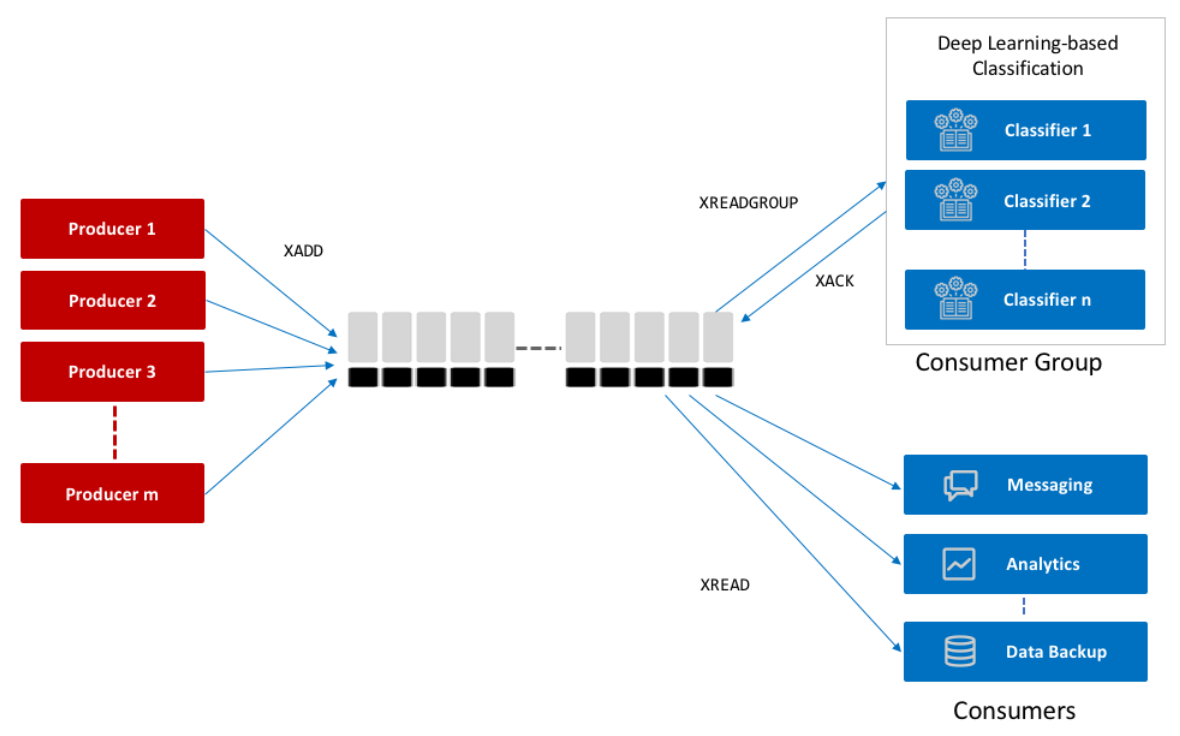
Key Differences
Performance Characteristics
| Attribute | Redis Streams | Apache Kafka |
|---|---|---|
| Data Storage | In-memory with optional persistence | Disk-based with in-memory caching |
| Latency | Sub-millisecond (extremely low) | Low (but higher than Redis) |
| Throughput | High (limited by memory) | Very high (designed for high throughput) |
| Scalability | Limited by Redis clustering capabilities | High scalability with partitioning |
| Data Retention | Typically shorter term (hours to days) | Long-term storage capabilities (days to years) |
| Memory Efficiency | High | Memory used primarily for caching |
| Processing Model | Single-threaded event loop | Distributed processing |
Messaging Workflow
Kafka Workflow :
Producers publish messages to brokers, which categorize data into topics and store in partitions
Consumers connect to relevant topics and extract data from corresponding partitions
Topics are divided across multiple brokers for scalability and fault tolerance[9][10]
Redis Streams Workflow :
Uses a client-server architecture with keys and primary-secondary nodes
Producers use
XADDto append entries to streamsConsumers use
XREADorXREADGROUPto retrieve messagesSupports consumer groups similar to Kafka, but with different implementation details[9][11][16]
Use Cases: When to Choose Which
Choose Redis Streams When:
Processing less than 1TB of data per day
Seeking simplicity in deployment and operations
Message history needs are moderate (hours to days)
Already using Redis for other components
Sub-millisecond processing is required
Working with simpler streaming needs in a familiar Redis environment[11]
Choose Kafka When:
Processing more than 1TB of data per day
Long-term storage (days to years) is needed
Requiring integration with Hadoop, Spark, or other big data tools
Advanced partition management is required
Cross-datacenter replication is essential
Building complex, large-scale data pipelines[11][5]
Technical Implementation
Consumer Group Mechanisms
Both systems implement consumer groups, but with different approaches:
Kafka Consumer Groups :
Assign partitions to consumers statically
If a consumer fails, the group coordinator triggers a rebalance
Each partition is processed by exactly one consumer in a group[4][8]
Redis Streams Consumer Groups :
Created with
XGROUP CREATEcommandMaintain a "Pending Entries List" (PEL) for tracking unacknowledged messages
Support runtime consumer handling - if one consumer fails, Redis continues serving others[11][15][16]
## Creating a consumer group in Redis
XGROUP CREATE mystream mygroup 0
## Reading from the stream using the consumer group
XREADGROUP GROUP mygroup consumer1 STREAMS mystream >
Data Persistence Models
Kafka :
Persists all data to disk by default
Uses a log-structured storage model with segment files
Retains messages for configurable periods (days to years)
Provides strong durability guarantees[5][9]
Redis Streams :
Primarily in-memory with optional persistence
Persistence options include AOF (Append-Only File) and RDB (Redis Database)
Memory is the primary limiting factor
Can be configured with
MAXLENto automatically trim older entries[11][16]
## Writing to a Redis stream with a cap on its length
XADD mystream MAXLEN ~ 1000 * field value
Performance Optimization
Kafka Optimization Best Practices
Partition Optimization :
Increase partitions for higher parallelism
Balance between too few (limited parallelism) and too many (overhead)
Consider the relationship between partitions and consumer groups[6]
Producer Configuration :
Adjust
batch.sizefor throughput vs. latency tradeoffConfigure
linger.msto allow batching for better throughputUse appropriate compression settings for your workload[6]
Consumer Configuration :
Set appropriate
fetch.min.bytesandfetch.max.wait.msConfigure consumer
max.poll.recordsbased on processing capabilitiesConsider thread count and processing model[6]
Redis Streams Optimization
Memory Management :
Use
XTRIMto limit stream length and prevent memory issuesUse approximate trimming for efficiency with
~symbolConfigure
stream-node-max-bytesto control per-node memory usage[11]
## Limit stream length to prevent memory issues
XTRIM mystream MAXLEN ~ 100000
Consumer Group Optimization :
Process messages in batches (10-100 entries)
Acknowledge messages in batches to reduce network round-trips
Set appropriate timeouts for blocking operations[11]
Monitoring Metrics :
Track stream length and details with
XINFO STREAMMonitor consumer group status with
XINFO GROUPSCheck individual consumer lag with
XINFO CONSUMERS[11]
Common Issues and Troubleshooting
Consumer Lag
Kafka :
Monitor consumer lag metrics using Kafka's monitoring tools
Scale consumer groups horizontally to improve processing throughput
Optimize consumer configurations and processing logic[6]
Redis Streams :
Monitor pending entries list (PEL) for growing backlog
Add more consumer instances to scale processing
Enable batch acknowledgment using
XACKwith multiple IDs[11]
Memory Pressure
Kafka :
Less susceptible to memory pressure due to disk-based storage
Monitor broker heap usage and GC patterns
Adjust JVM parameters as needed[6]
Redis Streams :
Critical concern due to in-memory nature
Use auto-trimming with
XTRIMto manage historical dataMonitor Redis memory usage via
INFO memorycommandConsider Redis cluster deployment for horizontal scaling[11][12]
Message Loss
Kafka :
Configure appropriate replication factor (typically 3)
Set proper
acksvalue for producers (usuallyallfor critical data)Implement idempotent producers for exactly-once semantics[5]
Redis Streams :
Be aware of replication limitations - asynchronous replication doesn't guarantee all commands are replicated
Implement client retry mechanisms for critical messages
Enable AOF persistence as 'always' for improved durability[11][15]
Scalability Approaches
Kafka Scalability
Kafka achieves horizontal scalability through:
Distributing partitions across brokers
Adding more brokers to a cluster to increase capacity
Allowing consumer groups to parallelize processing
Supporting cross-datacenter replication[5][9]
Redis Streams Scalability
Redis Streams scaling options include:
Sharding streams across multiple Redis nodes
Using Redis Cluster for automatic partitioning
Implementing client-side sharding strategies
Leveraging consumer groups for parallel processing[11][12]
## Example pseudo-code for sharding in Redis Streams
shard_id = hash_func(data) % num_of_shards
redis_clients[shard_id].xadd(stream_name, data)
Conclusion
Both Apache Kafka and Redis Streams offer powerful capabilities for handling streaming data, but they excel in different scenarios.
Kafka stands out for large-scale, distributed applications requiring long-term message retention, high durability, and extensive ecosystem integration. Its robust architecture makes it ideal for enterprise-grade applications with complex data pipelines and high-volume throughput requirements[5][9][17].
Redis Streams shines in scenarios requiring extreme low latency, simpler deployment, and when working within an existing Redis infrastructure. Its in-memory nature makes it exceptionally fast but more constrained by memory availability, making it better suited for scenarios with moderate data volumes and shorter retention needs[11][16][17].
The choice between these technologies should be guided by your specific requirements around data volume, retention needs, latency sensitivity, and existing infrastructure. For many organizations, they may even complement each other, with Redis Streams handling ultra-low-latency requirements while Kafka serves as the backbone for broader data streaming needs.
If you find this content helpful, you might also be interested in our product AutoMQ. AutoMQ is a cloud-native alternative to Kafka by decoupling durability to S3 and EBS. 10x Cost-Effective. No Cross-AZ Traffic Cost. Autoscale in seconds. Single-digit ms latency. AutoMQ now is source code available on github. Big Companies Worldwide are Using AutoMQ. Check the following case studies to learn more:
Grab: Driving Efficiency with AutoMQ in DataStreaming Platform
Palmpay Uses AutoMQ to Replace Kafka, Optimizing Costs by 50%+
How Asia’s Quora Zhihu uses AutoMQ to reduce Kafka cost and maintenance complexity
XPENG Motors Reduces Costs by 50%+ by Replacing Kafka with AutoMQ
Asia's GOAT, Poizon uses AutoMQ Kafka to build observability platform for massive data(30 GB/s)
AutoMQ Helps CaoCao Mobility Address Kafka Scalability During Holidays
JD.comx AutoMQ x CubeFS: A Cost-Effective Journey at Trillion-Scale Kafka Messaging
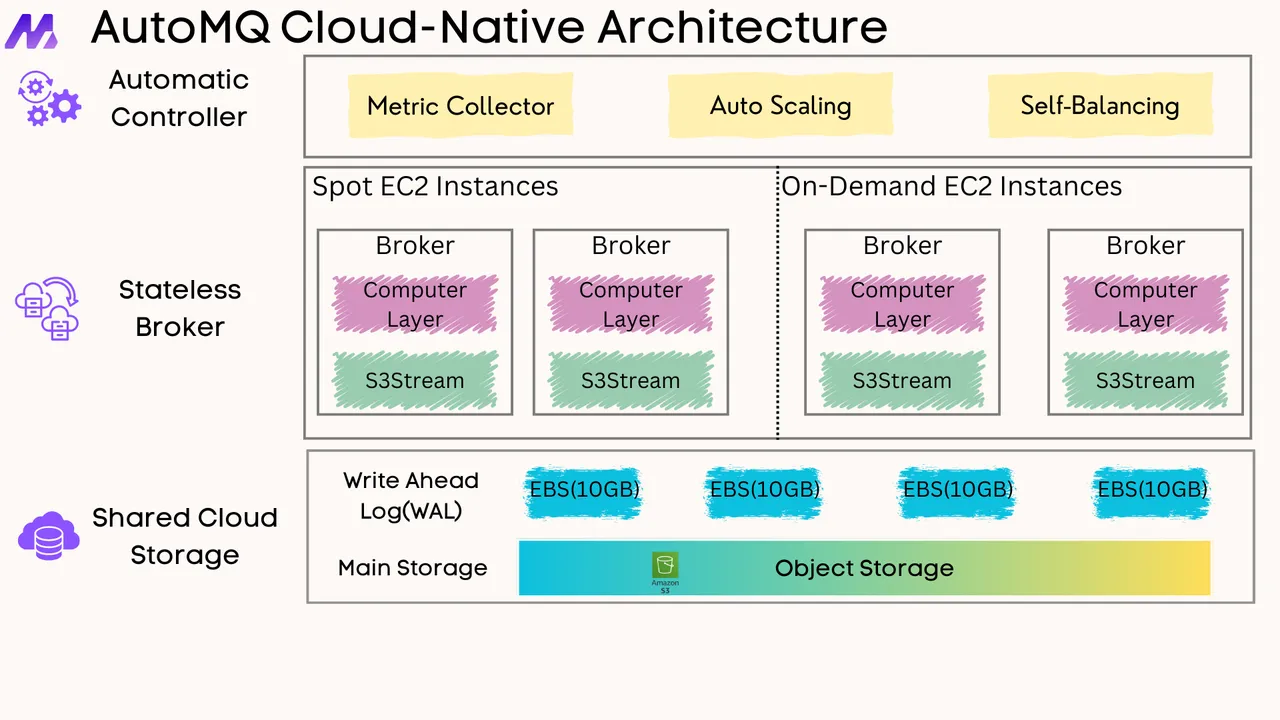





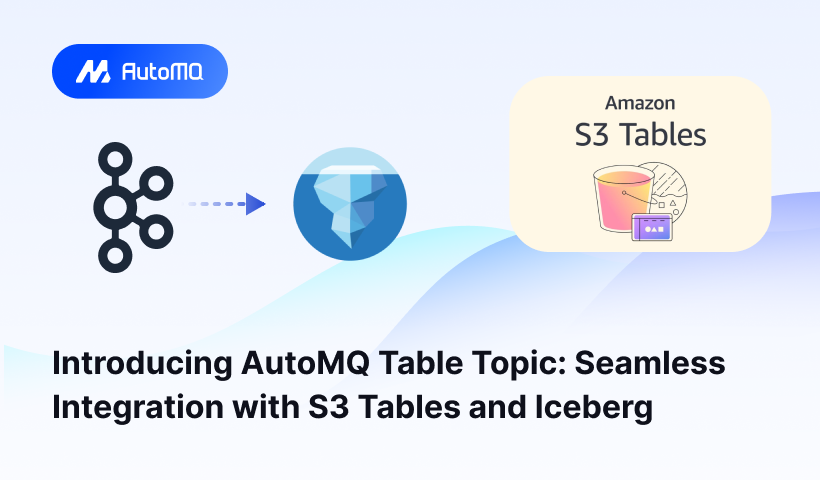
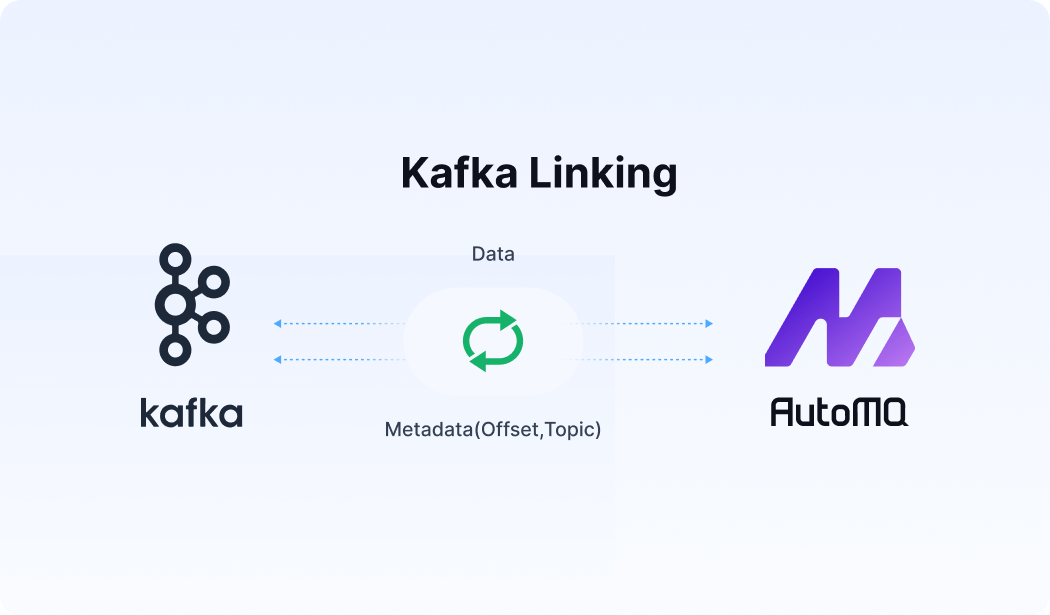




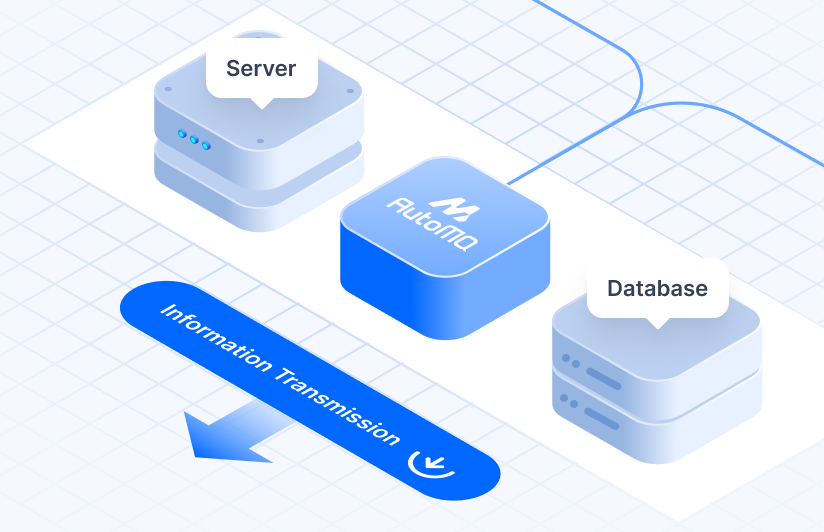
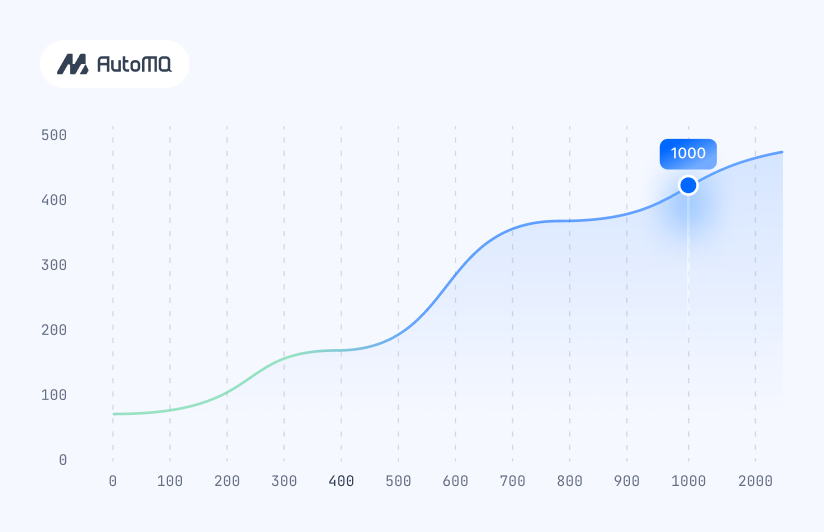


.png)
